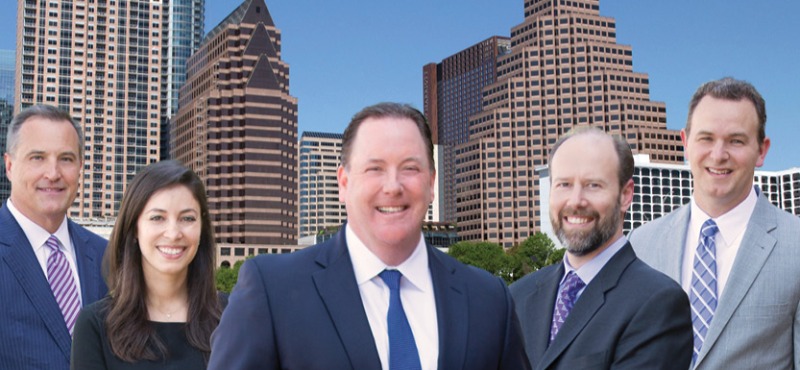“Based upon the documentation you have provided, the plaintiff appears to have a reasonable case to pierce the corporate veil between your entities, and, therefore, reach directly to you.”
This was the assessment made by prior counsel in a privileged communication sent to our clients —several corporations and their sole shareholder—who were defendants in a corporate veil-piercing case brought by a multibillion-dollar global company. Unfortunately, the trial court had ordered this and all other communications exchanged by prior counsel and our clients to be produced to the plaintiff along with $75,000 in legal fees as a discovery sanction.
The above quote, and similar damaging language contained in communications between our clients and their prior counsel, was extensively cited by the plaintiff in virtually every pleading it filed in the case and with devastating effect. The trial court twice allowed wide-ranging injunction orders freezing our clients’ assets concluding, in both instances, that the plaintiff was likely to succeed at trial.
This virtually ensured that our effort to settle the case during a pretrial mediation session would fail. It did.
Compounding the difficulties we already had in defending this case was the trial court’s denial of our request to depose the plaintiff’s expert witness and to offer expert witness testimony on behalf of the defendants.
What’s more, the plaintiff filed this factually intense and legally complex case in another state. The defendants opted not to defend the case, were defaulted, and judgment was entered against two of the corporate defendants for substantial monetary damages. The plaintiff then filed a new case in Massachusetts to domesticate the foreign judgment and asserted claims based on that foreign judgment against the other related corporate defendants and their principal shareholder on corporate veil piercing and alter ego liability theories.
In effect, the plaintiff was attempting to bootstrap the foreign judgment in order to hold our clients liable for the foreign judgment because the two corporate defendants initially sued by the plaintiff in the other state had gone out of business.
On the surface, the plaintiff appeared to have a strong case: There was evidence that the defendant corporations were commonly owned by one individual or by an entity he controlled; the defendant corporations were thinly capitalized and hadn’t paid any dividends; there were numerous intercorporate loans that were not supported by promissory notes or board of directors approval; there was evidence that funds belonging to some of the defendant corporations were utilized by the other defendant corporations; and one of the defendant corporations provided accounting, bookkeeping, and other administrative services to all of the other defendant corporations.
"Corporate veil piercing is one of the more highly litigated commercial claims in the United States and remains among the most complex and least understood legal concepts in American jurisprudence."
The plaintiff also enlisted the cooperation of one of the defendant corporation’s ex-CEOs who provided the plaintiff with affidavits purportedly demonstrating that corporate assets were being siphoned off by the defendant corporations’ sole shareholder. The plaintiff served notice that this ex-CEO would also provide damaging trial testimony against the defendant corporations’ sole shareholder.
We were confident, however, that the defendants’ expected evidence on many of these issues would counter the plaintiff’s claims and that, overall, the defendants had not done anything improper or illegal. We also felt we had a better chance of explaining about the complex intercorporate transactions and the thousands of pages of financial records to a trial judge rather than a jury. Neither the plaintiff’s counsel nor the defendants’ prior counsel had requested a jury trial.
Even though a substantial amount of discovery in the case had already been conducted before we took over, with the remaining depositions we were able to neutralize the more damaging facts contained in the ex-CEO’s affidavits and demonstrated through other deposition testimony that many of the factual allegations contained in the plaintiff’s complaint were erroneous. We were also successful in opposing the plaintiff’s efforts to amend its complaint to add additional claims, including those based upon unfair and deceptive acts and practices under Massachusetts General Laws Chapter 93A, which, if proven, would have exposed our clients to multiple damages and attorney’s fees.
Shortly before the trial began, we were also successful in excluding the plaintiff’s use of the privileged communications exchanged between the defendants and their prior counsel and we were able to utilize nonexpert testimony to counter the plaintiff’s expert witness testimony since we had been precluded from introducing our own expert witnesses.
Following a nine-day bench trial, in a detailed opinion, the trial judge declined to pierce the veils of the corporate defendants and their sole shareholder. The trial court’s decision was affirmed on appeal in a 25-page decision by the appeals court.
Although, as noted above, the defendants were successful in defeating the plaintiff’s veil-piercing claims, that success came at a heavy price. The attorney’s fees and the innominate costs for the defendants and their employees, burdened by defending the case while trying to operate their businesses during the four-plus years the case remained active, were enormous.
Corporate veil piercing is one of the more highly litigated commercial claims in the United States and remains among the most complex and least understood legal concepts in American jurisprudence. Corporations, both large and small, who believe their officers, directors, and shareholders are insulated from liability simply because they are incorporated, could find themselves, like the defendants in our case, enmeshed in expensive, “bet the company” litigation. Simply relying on the corporate form without gaining a complete understanding of corporate veil piercing and alter ego principles and taking steps to minimize exposure to veil-piercing claims could lead to costly, time-consuming, and highly risky litigation.
Contributing Author: Robert Stetson
Peter B. McGlynn, a partner at Bernkopf Goodman LLP is a trial attorney specializing in construction, surety, malpractice, commercial and bankruptcy cases. Peter has tried to verdict or decision in excess of 150 cases throughout the United States representing general contractors, subcontractors, architects, engineers, lenders, sureties and owners, among others, on a wide array of commercial, construction, surety and bankruptcy disputes.
Robert W. Stetson, a partner with Bernkopf Goodman LLP, has significant experience in disputes involving corporations and other business organizations, construction projects, contracts, real estate, landlord-tenant, and shareholder disputes. Bob represents a variety of clients ranging from individuals to multi-national corporations in all phases of litigation including trial and appellate practice.
Protect your business. Connect with a top attorney through the Best Lawyers Find a Lawyer tool.

















